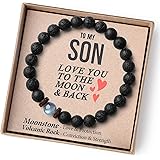Kukka Rosemary Oil for Hair - 4 Fl Oz - 100% Pure Natural Rosemary Essential Oil - A Great Addition for Shampoo & Scalp Treatments - Made for Hair Care, Skin, Diffusers, Aromatherapy & DIY Soap Making
$12.99 (as of February 17, 2025 12:49 GMT +00:00 - More infoProduct prices and availability are accurate as of the date/time indicated and are subject to change. Any price and availability information displayed on [relevant Amazon Site(s), as applicable] at the time of purchase will apply to the purchase of this product.)Amazon Echo Dot (newest model), Vibrant sounding Alexa speaker, Great for bedrooms, dining rooms and offices, Glacier White
$49.99 (as of February 17, 2025 12:49 GMT +00:00 - More infoProduct prices and availability are accurate as of the date/time indicated and are subject to change. Any price and availability information displayed on [relevant Amazon Site(s), as applicable] at the time of purchase will apply to the purchase of this product.)Ring Rechargeable Quick Release Battery Pack
$28.97 (as of February 17, 2025 12:49 GMT +00:00 - More infoProduct prices and availability are accurate as of the date/time indicated and are subject to change. Any price and availability information displayed on [relevant Amazon Site(s), as applicable] at the time of purchase will apply to the purchase of this product.)Elixir Strings, Acoustic Guitar Strings, 80/20 Bronze with NANOWEB Coating, Longest-Lasting Bright and Focused Tone with Comfortable Feel, 6 String Set, Light 12-53
$16.99 (as of February 17, 2025 12:49 GMT +00:00 - More infoProduct prices and availability are accurate as of the date/time indicated and are subject to change. Any price and availability information displayed on [relevant Amazon Site(s), as applicable] at the time of purchase will apply to the purchase of this product.)MAYBESTA Professional Wireless Lavalier Lapel Microphone for iPhone, iPad - Cordless Omnidirectional Condenser Recording Mic for Interview Video Podcast Vlog YouTube
$22.99 (as of February 17, 2025 12:49 GMT +00:00 - More infoProduct prices and availability are accurate as of the date/time indicated and are subject to change. Any price and availability information displayed on [relevant Amazon Site(s), as applicable] at the time of purchase will apply to the purchase of this product.)For over six decades, the Barbie doll has been a cultural icon, symbolizing femininity and beauty. However, its counterpart, the Ken doll, has often taken a backseat in popularity. Despite this, the Ken doll has undergone significant transformations, reflecting changing societal values and trends. In this article, we’ll delve into the history of the Ken doll, exploring its evolution, technical specifications, and comparisons with other popular fashion dolls.
A Brief History
Introduced in 1961 by Mattel, Inc., the Ken doll was created as a companion to Barbie. Initially marketed as “Barbie’s boyfriend,” Ken was designed to embody traditional masculine ideals: tall, handsome, and athletic. The first Ken doll sported a blonde wig, blue eyes, and a slim build, setting the stage for future iterations.
The 1960s-1980s: A Reflection of Masculinity
During this period, Ken dolls were marketed as a symbol of masculinity, with features like broad shoulders, chiseled abs, and a strong jawline. The dolls were often dressed in attire that reflected traditional masculine norms, such as suits, ties, and sports jerseys.
The 1990s-2000s: Diversification and Modernization
In the 1990s and early 2000s, Ken dolls began to undergo significant changes, reflecting shifting societal values. Mattel introduced a more diverse range of skin tones, hairstyles, and body types, aiming to make the doll more inclusive.
The 2010s-Present: A Focus on Body Positivity
In recent years, Ken dolls have continued to evolve, focusing on body positivity and self-acceptance. The introduction of plus-size and curvy versions has helped promote a more realistic and diverse representation of masculinity.
Technical Specifications
- Height: 12 inches (30 cm)
- Weight: approximately 2 pounds (0.9 kg)
- Body Type: Varies depending on the version, including traditional, plus-size, and curvy
- Hair: Blonde, brown, or other colors available
- Eyes: Blue or other eye colors
- Accessories: Varied, including clothing, shoes, hats, and accessories
Comparisons with Other Fashion Dolls
While Ken dolls have undergone significant changes, they still lag behind other fashion dolls in terms of diversity and inclusivity. For example:
- American Girl’s Historic Character line features dolls with disabilities, such as a doll with a prosthetic leg or a doll who uses a wheelchair.
- L.O.L. Surprise! dolls offer a wider range of skin tones, hairstyles, and body types.
Conclusion
The Ken doll has come a long way since its introduction in 1961. From reflecting traditional masculinity to embracing diversity and inclusivity, the doll has evolved to better represent modern societal values. While there is still room for improvement, the Ken doll remains an iconic fashion figure, offering children and collectors alike a unique and engaging play experience.
Comparison Chart
| Feature | Barbie Doll | American Girl Historic Character | L.O.L. Surprise! |
|---|---|---|---|
| Skin Tone Variety | 3-4 options | 10+ options | 20+ options |
| Body Type Options | Traditional, plus-size, curvy | Varied, including disabilities | Plus-size, curvy, petite |
| Hair Color Variations | 10+ colors | 5+ colors | 15+ colors |
Note: This comparison chart is not exhaustive and is intended to provide a general overview of the features available in each doll line.












